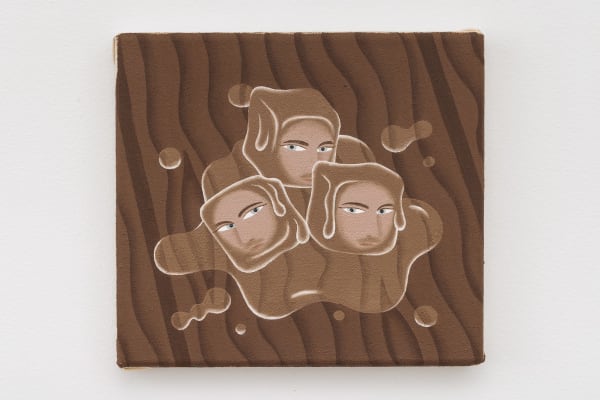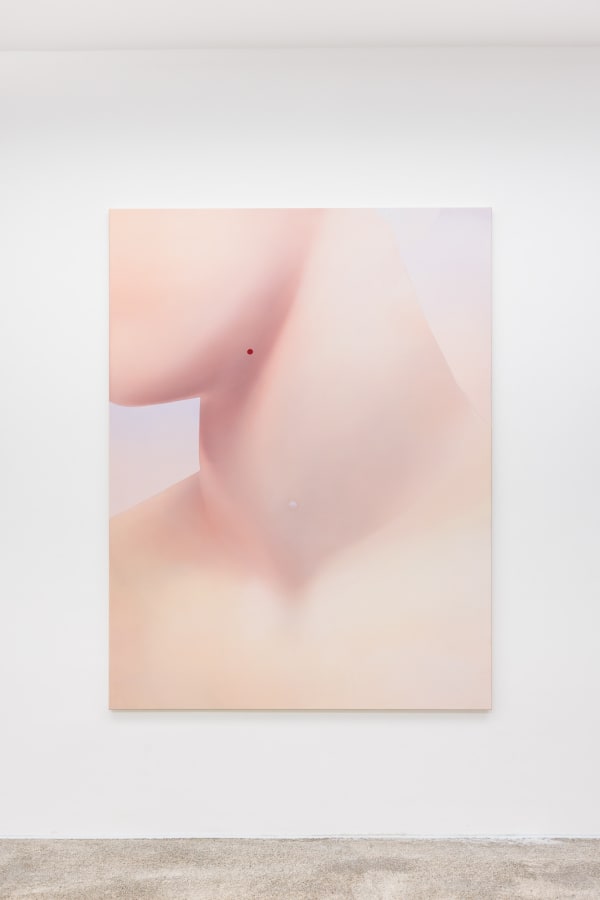Breaking Flesh
Previous exhibition
Text
Breaking Flesh. The antithetical nature of the exhibition title, both in the combination of wording and the inherent contradictions within our unconscious understanding of the traits of these two words, attempts to begin the disintegration of our perceived notions of the interplay between bodies and the nuances of human connection both internal and external. First to explore the idea of flesh. An immediately physical concept, but not exclusively human nor living. Flesh can connote the bestial, the rotting corpse, the maimed and the erotic. Yet always perpetually mortal and unceasingly temporal. To break suggests to shatter, snap, sever. Flesh on the other hand, as distinct from the skeleton, can be torn, burned, shredded, punctured but by its very physicality the means of violation are tangibly and sonically distinct. Just as the connections and meanings of these words at first seem overt, whilst then collapsing and reconfiguring, so do the works of the artists in the exhibition elude the confines of the immediately observable. The figurative collapses into the abstract, the absurd as opposed to the psychoanalytical and at times the gentle in contrast to the violent.
Enduring since the Ancient Greek use of the term “sarx”, meaning the flesh of the body (or indeed of the horse), and the biblical continued thematic use, “flesh” is commonly adopted as a metaphor for man’s sinful nature. As a consequence, the flesh tends to have a connotation of psychological weakness. Correspondingly, the very composition of the flesh (delicate skin cells on muscle fibers, surrounded by blood vessels filled with a liquid that itself contains small floating platelets flowing through water) constitutes a fragile configuration. The works within the exhibition oftentimes explore the fragility of the anatomical flesh as an analogy for the mutability, imperfections and distortions of the human psyche. The motifs contained within the works including: a ruptured ear cartilage, scarred wounds, skin dissolving as if melted by molten heat, the memento mori of flies upon the skin and the ultimate dissolution into our base watery chemical elements, each ruminate on the impermanence and fallibility of our conscious existence.
In defiance of the fallibility of the human psyche, the works in ‘Breaking Flesh’ elude dogmatic moral judgments. The foundation of our contemporary ideals concerning the body also trace a lineage back to the classical Greco-Roman quintessential aesthetic principals. Smooth, shaven, unblemished skin as compliment to an assumption of interior good, innocence and morality. However, in the works presented here, corruption of the flesh is predominantly presented with ambivalence rather than a strict conformation to its traditional association with the amoral and depraved. Instead, the compressions and deformations of the human body reflect upon the activities and movements of the inner self. Without judgement and with a sense of objective curiosity towards the act of introspection.
Despite of its vulnerability, the flesh constitutes the first protective facade of our selfhood. This permeable membrane of skin that surrounds us necessitates our corporeal pursuit of shelter. The territorial nature of our beings and instinct for self-preservation is often reflected through seeking the protection of physical and psychological architecture. The domestic environment contains and protects us, creating a boundary in which we can believe in safety from an outside world, both sensorially and emotionally, that is unpredictable and disturbing. Extended beyond the domestic architecture, the wider built environment we have developed for our societies contains concurrent isolated units: flats, houses, offices, cities, countries. Thus, our physical proximity to one another contradicts our alienation from the distinctly differing realms existing within each of us and our surroundings.
In returning to the flesh, whilst the skin ultimately separates us as individuals it is simultaneously an organ defined by touch, sensation and contact. In differing ways, each of the artworks in ‘Breaking Flesh’ depict the body as a means of connection. Magnified portraits of the fingerprints of one touching another’s skin lays out the earnest intimacy of the joining of flesh. Violent destruction between brothers collapsing in against the weight of entanglement. Where the anatomical elements become indistinct or disintegrate into abstraction in portraits, the boundaries between individuals coalesce and fragment. Through this, we are compelled to consider the universality of our isolation, the inescapable imperfection of the human condition and through this our elemental connectivity.
Installation Views
Works





















